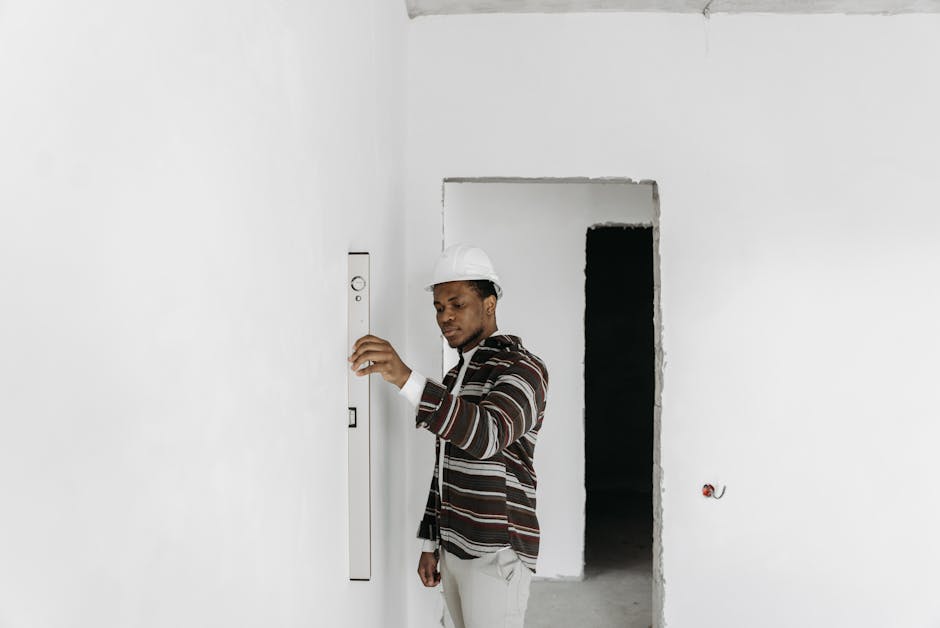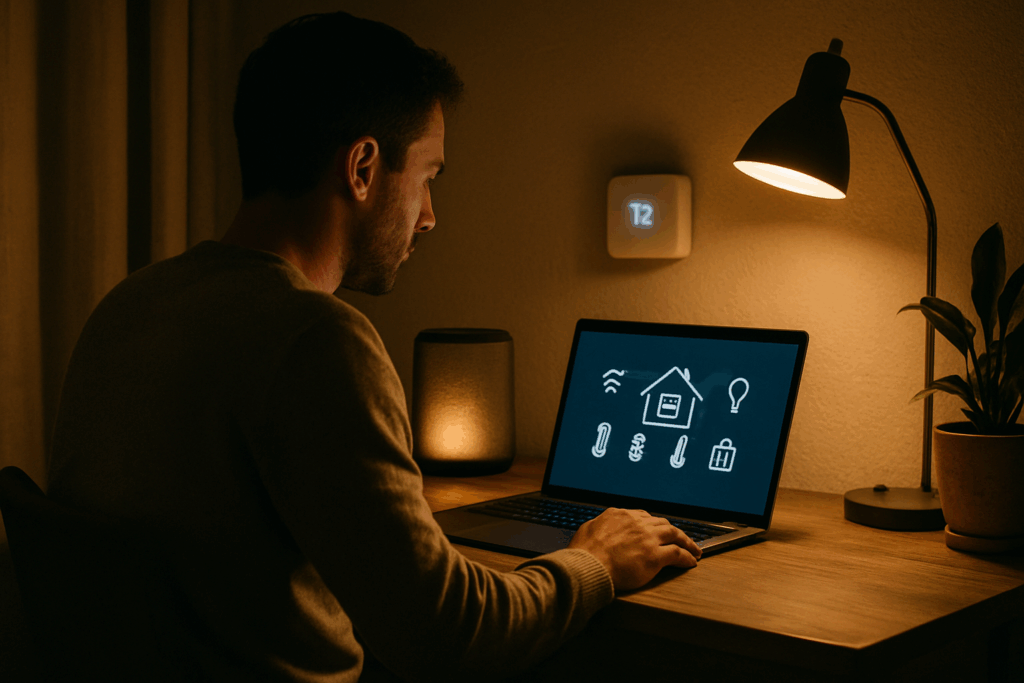Why Home Renovation Is Entering a New Era
Renovation spending is climbing fast—and it’s not just because people are stuck staring at outdated kitchens. After years of limited travel and home-centric lifestyles, homeowners are investing more in the spaces where they actually live. Add rising property values and the cost of moving, and renovation becomes the more practical—and often cheaper—alternative. People aren’t just remodeling; they’re upgrading how their homes function.
Expectations have shifted. Homeowners now want more than paint and backsplash. They’re demanding energy efficiency, fast timelines, and tech that syncs across devices. Touchless fixtures, integrated HVAC systems, smart lighting—it’s all part of the checklist. And thanks to better materials and software, more of that is possible without blowing the budget.
Speed matters, too. Modular builds and prefab components are on the rise because they save time, reduce errors, and get the job done with less labor. Sustainability is no longer a niche; it’s baked into planning and purchasing discussions. Green doesn’t just feel good—it performs better, lasts longer, and helps resale. That’s the new mindset driving this renovation boom.
Long story short: homeowners are thinking like developers. And the industry is finally catching up.
Smart Tech Meets Structural Design
Homeowners aren’t just thinking about open floor plans or granite countertops anymore—they’re planning for fully connected living. The rise of integrated home automation is changing how renovations are scoped, budgeted, and executed. It’s no longer an afterthought; smart tech is baked into the blueprint from day one.
What does this look like? Think HVAC systems that optimize energy use based on real-time weather or occupancy. Lighting schemes that shift with the sun, or security setups that pair motion sensors with external smart cams and remote access. These are no longer luxury perks—they’re fast becoming baseline expectations.
To pull it off, general contractors are teaming up with tech consultants and systems integrators earlier in the design process. Designers are also doing more than choosing finishes—they’re planning wiring maps and device zones. The result? Sleeker installs, fewer change orders, and homes that actually think.
Smart upgrades used to be additions. Now, they’re infrastructure.
Sustainable Materials That Perform
Sustainable doesn’t mean soft. Today’s eco-friendly materials are not only competitive—they’re often the smarter pick. Builders and renovators now have access to high-quality alternatives that reduce environmental impact without sacrificing durability or design.
Take wood alternatives: engineered bamboo, reclaimed timber, and recycled composites are holding their own in flooring, paneling, and even load-bearing applications. Low-VOC paints are standard in better builds now—cutting down indoor toxins while hitting every shade on a designer’s wishlist. And insulation? Recycled denim and cellulose-based options keep homes just as tight and energy-efficient as traditional fiberglass, without the itch.
This shift isn’t just a trend—it’s a resale strategy. More homebuyers are looking for green features baked into renovations. Eco-conscious design now translates directly into higher property value and faster sales. Homeowners aren’t just saving the planet—they’re cashing in too.
AR & VR in Planning and Design
Before the first hammer swings, homeowners want to know what they’re getting. AR and VR are delivering exactly that, letting clients step inside a digital version of their future space before anything gets built. From layout tweaks to lighting angles, these tools eliminate guesswork.
Contractors are leaning into the tech. Instead of flat blueprints or mockups, they walk clients through virtual builds that feel almost tactile. That means fewer back-and-forths, fewer surprises, and a sharper vision from day one. The result? Plans that stick, timelines that hold, and budgets that don’t suddenly balloon halfway through the project.
It’s not just flashy. It’s functional. And it’s quickly becoming standard for firms that want an edge.
Modular and Prefab Components
The home renovation industry is rapidly adopting modular and prefab solutions—and it’s not just about cutting costs. These innovative approaches are transforming how kitchens, bathrooms, and even full home extensions are built and installed.
Fast, Clean, and Efficient Installs
Gone are the days of months-long renovations filled with dust and disruption. With modular components, large portions of renovation work can be completed off-site, then installed in days rather than weeks.
– Pre-built Kitchens & Bathrooms: Factory-assembled units ensure tighter quality control and faster installs.
– Modular Extensions: Entire room additions can be delivered and attached to a home with minimal site disturbance.
– Minimal Downtime: Perfect for families wanting renovations without vacating their homes.
Fewer Delays, More Precision
Traditional renovations leave room for human error and miscommunication. Modular systems reduce that risk significantly:
– Measurements are standardized, reducing the chance of last-minute changes.
– Installation is streamlined, with fewer trades needed on site.
– Weather delays are reduced, as much of the work is done indoors at the manufacturing site.
Answering the Labor Shortage
With skilled trades in short supply across many regions, prefab and modular approaches help fill the gap.
– Labor is concentrated in factories, where conditions are controlled and efficiency is higher.
– Fewer on-site labor hours required, freeing up contractors to take on more jobs.
– More predictable timelines, which helps manage client expectations and improve satisfaction.
Modular doesn’t just mean mass-produced—it means maximum efficiency with smarter design. As innovations continue to evolve, expect prefab to play a growing role in quality renovations delivered on time and on budget.
Project Management Apps That Actually Work
The clipboard and pen routine? It’s done. Home renovation is finally catching up with the software age. Project management apps are cutting through the paper clutter, replacing it with real-time dashboards, instant messaging, and synced calendars. Everyone from the homeowner to the subcontractor knows what’s happening—and when.
These platforms are reducing the usual chaos. Instead of playing phone tag or digging through email threads, clients get updates straight from the site. Change orders get logged instantly. Install timelines get adjusted without anyone yelling across a job site. Less confusion means fewer mistakes, and fewer mistakes mean deadlines that actually stick.
The apps are also bridging the gap between the trades. Plumbers and electricians aren’t working blind anymore—they see when drywall’s up, when inspections are booked, and when they’re really expected on-site. The result? Fewer surprises, better builds.
Challenges Still Facing the Industry
Despite the wave of innovation transforming home renovation, several real-world challenges continue to slow things down. Industry professionals—from contractors to designers—still wrestle with old problems in new packaging.
Ongoing Supply Chain Delays
While the worst of the pandemic-era disruptions may be over, supply chains remain fragile:
– Lead times for appliances, specialty fixtures, and certain raw materials are still unpredictable
– Custom orders and finishes often come with extensive wait times
– Renovation schedules can shift dramatically due to one delayed shipment
What’s working: More pros are building buffer time into their timelines and diversifying suppliers to avoid single points of failure.
The Skilled Labor Gap
Technology might be advancing rapidly, but the workforce isn’t keeping pace:
– There’s a widening gap between high-tech renovation tools and the availability of workers trained to use them
– Retirements in the trades are outweighing new entrants
– Even with modular builds and automation, human craftsmanship is still essential
The fix: Upskilling programs and trade school partnerships are beginning to emerge—but not fast enough to meet demand.
Budget vs. Aesthetic Expectations
Homeowners are more design-savvy than ever, thanks to social media:
– Clients often arrive with Pinterest boards full of high-end ambitions
– Budget constraints and material costs can spark tension between dreams and reality
– Transparent communication is essential to balance expectations from the start
Pro strategy: Educating clients about cost breakdowns, realistic timelines, and return-on-investment trade-offs helps maintain trust while still delivering quality results.
In short, while the industry is modernizing, these challenges require just as much attention as the shiny, new innovations.
Where It’s Headed
Home renovation is shifting from a traditional, tool-heavy world to one more deeply intertwined with digital innovation. As these changes accelerate, several key trends are shaping what comes next.
Crossover: Tech Startups + Construction Firms
The lines between tech companies and construction firms continue to blur. Innovative startups with backgrounds in AI, automation, and material science are increasingly partnering with established contractors and design-build firms.
– Construction tech is no longer niche—it’s becoming mainstream
– Startups are delivering smarter tools for estimation, project tracking, and 3D modeling
– Traditional firms benefit from agility and scalability when integrating these tools
Transparency, Speed, and Digital Control
Modern homeowners expect more than craftsmanship—they expect a streamlined experience supported by real-time data and decision-making tools.
– Interactive dashboards track budgets, timelines, and design changes
– Clients can communicate directly with trades, reducing delays
– On-demand updates replace outdated “project check-ins”
This demand for efficiency and control is redefining what makes a renovation “successful”
Regulatory Lag: Innovation Outpacing Policy
While innovation moves swiftly, regulation often trails behind. Many municipalities still apply outdated codes or approval processes not equipped to handle prefabricated structures or automated systems.
– Building codes may need to adapt to allow for new sustainable materials
– Zoning laws can slow adoption of modular designs or green tech
– Data privacy regulations will become increasingly relevant with IoT systems in homes
In short, the future of home renovation lies in continuous collaboration—between designers, builders, technologists, and regulators—to meet rising homeowner expectations while navigating a rapidly changing landscape.
If you’re looking to get ahead of the curve—or at least keep up—you’ll want to see the full breakdown. From breakthrough materials to tighter project timelines powered by tech, there’s a lot moving fast in the home renovation world. We’ve rounded up the most impactful shifts in one place for a broader view of where the industry is going and why it matters now.
Read the full recap here: Monthly Recap: Big Developments in Home Improvement




